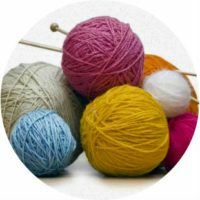
Openwork patterns, made with knitting needles, look at the finished product more accurately and harmoniously than the pattern of crochet. Such patterns can be very small or large. And also can reflect in themselves whole pictures. To knit azhurov knitting need to learn to perform the front and back loops, as well as their derivatives. Having minimal skills and a set of material, you can open the scheme you like and try to knit on it. And in the future you can design with a delicate pattern a high-grade knitted product for the house, your own wardrobe or as an original gift.
- Legend
- Variants of patterns
- Vertical waves
- Scythes
- Diamonds
- Leaves
- Lily of the valley
Legend
There are common conventions for making knitting loops when knitting with needles:
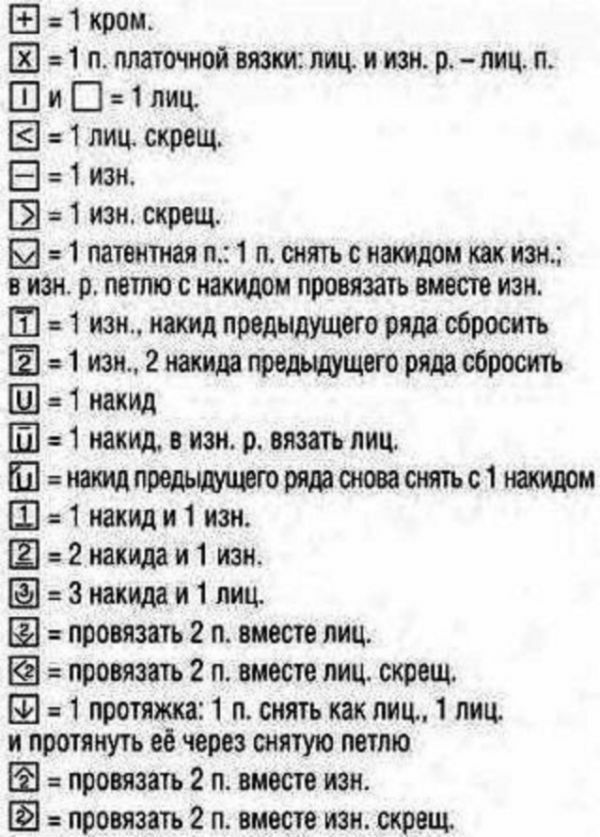
Variants of patterns
We offer a selection of 5 simple lightweight openwork versionsknitting patterns:
Vertical waves
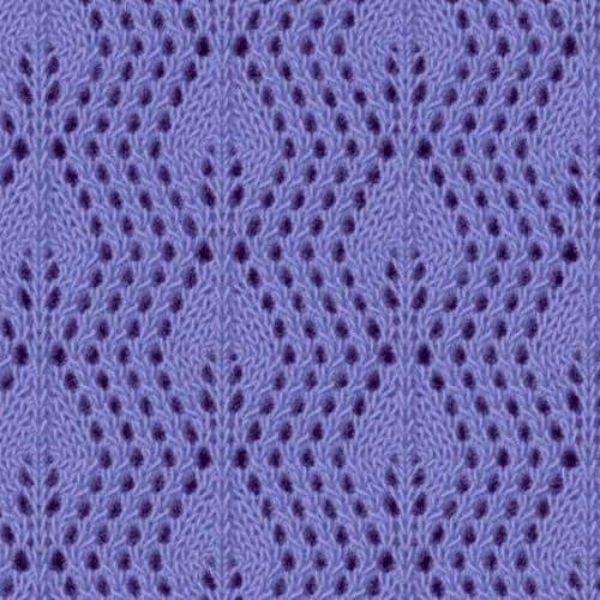
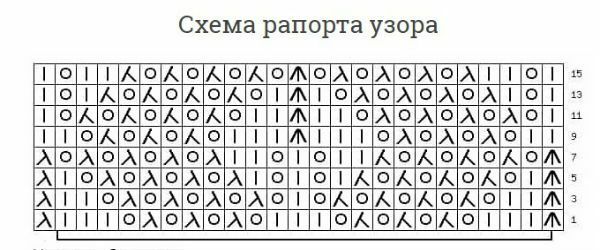
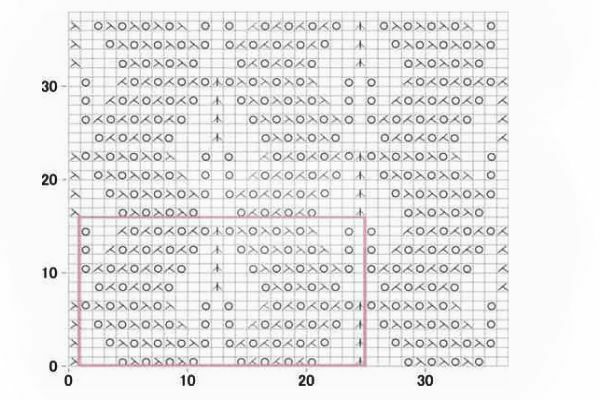
Zigzag waves and openwork leaves are seen in this pattern. Such an openwork cloth is suitable for knitting stoles, scarves, various jackets and light cardigans.
For the pattern to be viewed on the fabric there is its established rapport - 24 loops + 2 edge loops + 13 loops for symmetry of the pattern. In height, it is necessary to tie rows 1 through 16.
When tying out the back rows of the pattern, all the loops need to be knitted as they are on the spoke in the previous connected row, and all the nacs must be sewn with a back loop.
Knitting should begin with the edge loops before the rapport and end with loops after it, so that the pattern lies flat.
Braids
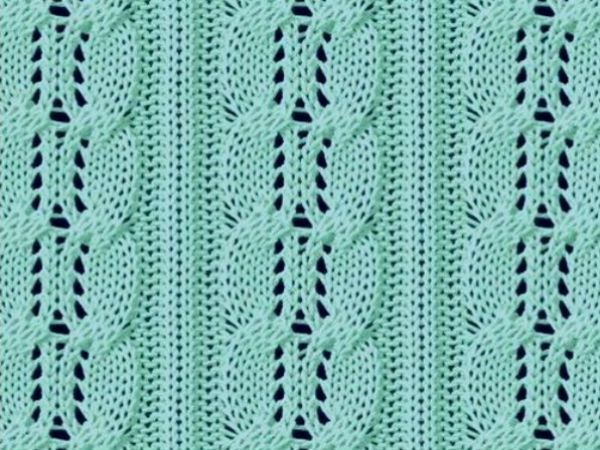
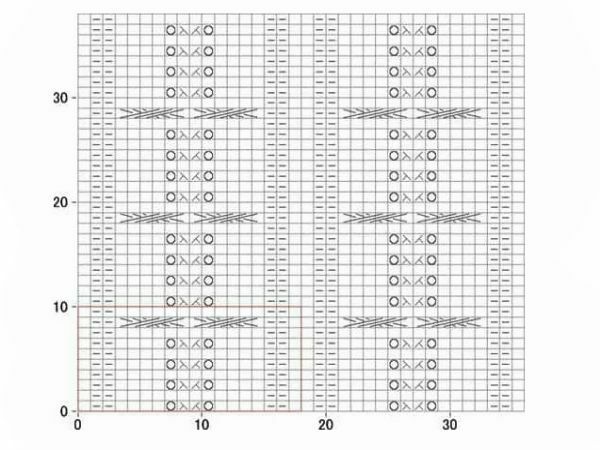
Openwork braids are perfect for decorating the front wallsdouble-winged sweatshirts or with a circular knit sweaters, the braids on the hats and berets will look great. And also such a pattern with straight knitting will look good on the scarf.
Reinforcement of tracery eyebrows 18, rows 10. It is marked with a red rectangle on the diagram.
When tying loops to align the pattern, it is necessary to type 2 edge loops on each side of the main fabric.
In the presented scheme, empty cells are the facial loops of a knitted fabric.
When tying out the purl patterns of the pattern, it is necessary to tie all facial loops with the backs, and the purlins, on the contrary, with the front ones.
Rhombuses
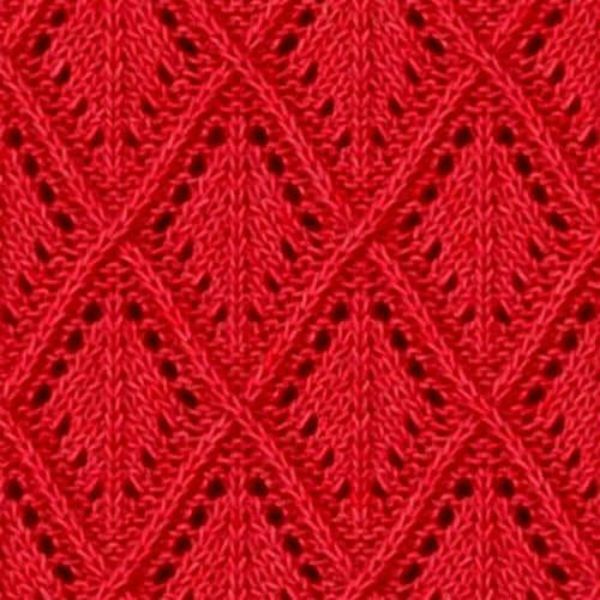
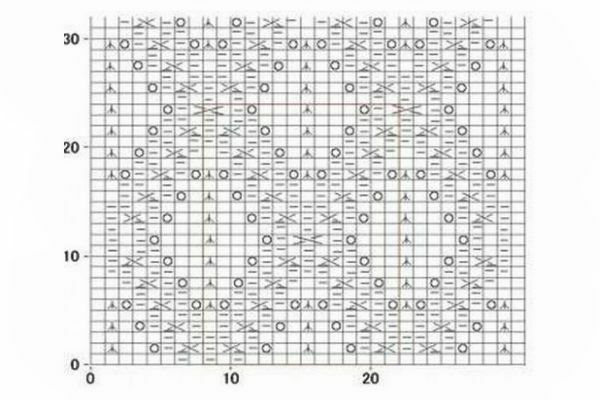
Universal openwork pattern. In the performance of knitting the elements of clothing or life with its application, there are no boundaries. The geometric fragment can be re-formed into any desired thing, as well as into any of its forms( knitting triangular kerchiefs, knitting square motifs, etc.).
Rapport of openwork rhombuses - 30 loops + 2 edge loops.
To see the pattern of the three rhombuses, on the knitted fabric you need to tie the plot of the pattern in the first 30 rows.
Each row starts and ends with a loop loop.
Having wired the purl series, it is necessary to repeat the pattern of the previous row, which lies on the spokes.
to contents ^Leaves
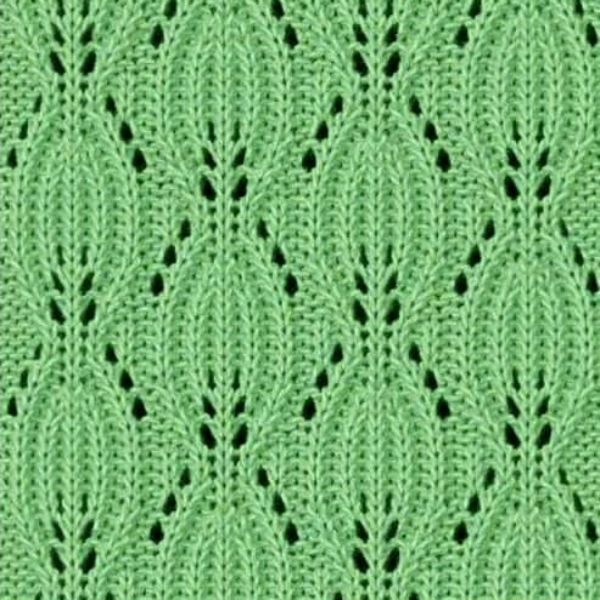
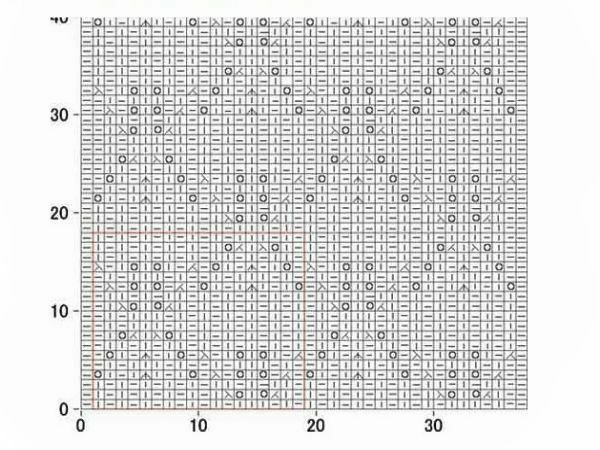
Simple and simple in knitting, but quite original pattern with round leaves will be an excellent decoration for any element of the wardrobe.
For knitting such leaves there is a rapport pattern - 18 loops, 18 rows.
The diagram shows both the front and back rows. Even - facial, odd - purl. Just as in most patterns, you need to knit the edge loops at the beginning and end of each row.
to contents ^Lily of the Valley
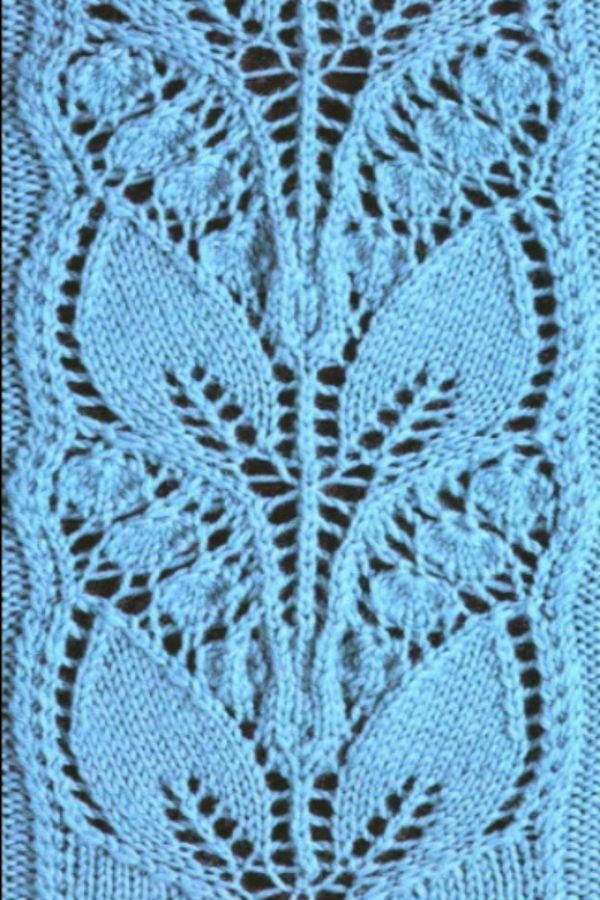
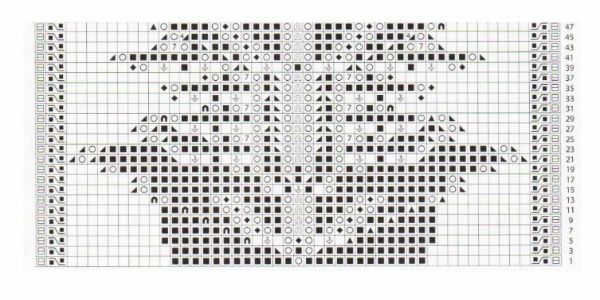
If you look at the pattern, you can see flowering lilies of the valley, directed from each other, each under a large sheet. This pattern will best look in the form of decoration of a double-winged sweater, the central part of a sweater, two halves of a cardigan and so on.
For knitting a pattern it is worth using a simple scheme. Empty cells in the diagram are presented for the convenience of reading it. In the process of knitting these cells are not considered a noose, but simply thrown away. Knit only the filled cells of the circuit. Reversal of the pattern consists of 29 loops.
For the symmetry of the pattern on the finished product, you need to knit in the scheme from 1 to 48 rows, and then repeat all the time from 15 to 48, to the desired length of the pattern. To finish the design you need to descend from 15 to 1 row.
